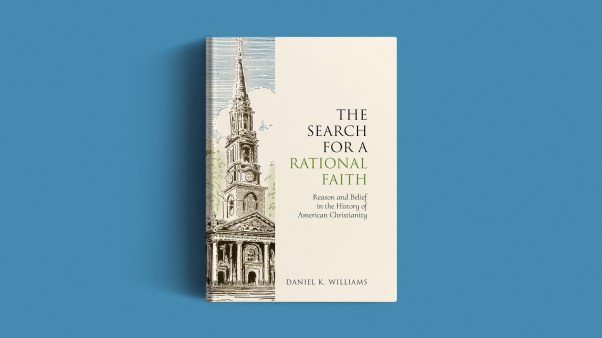When Ron Severns went to Oloombokishi in Kenya, East Africa, he found the church struggling with a problem. Less than ten years old, the church had grown up in a polygamous culture, the Masai. Most of the church’s male leaders had been converted as adults, already having two or more wives.
Missionaries to Africa in the nineteenth century, struggling to find an appropriate response to such plural marriages, had usually concluded that only one of the marriages could be valid. In nearly all churches, the rule had been laid down for new Christians: One wife—usually the first—could be kept, and the others had to be sent away.
This position always had its problems, however. The church might not consider a second or third marriage to be “real,” but the marriages often had been in existence for decades. Were the children to be deprived of one of their parents?
And what of the wife who was sent away? She often could not earn a living. Where was she to go? In some cultures, it was unacceptable for her to return to her parents; neither was another “proper” marriage a possibility after she had been married once. Dissolving second or third marriages put the church in the situation of causing pain and injustice rather than healing it.
The church at Oloombokishi had been started through the evangelistic efforts of the Africa Inland Church (AIC), a denomination related historically to the Africa Inland Mission. The AIC, now independent of the mission, had maintained the mission’s historic stand against polygamy. However, at Oloombokishi as in many other places, polygamous husbands had not sent away their wives. Rather, they had continued to be actively involved in the church. In fact, they dominated its leadership. The congregation was in the odd situation of having an unbaptized leadership, who could not take Communion.
Not all members of the AIC were happy with their church’s stand against polygamy. One young African AIC evangelist from another tribe—a tribe that has largely abandoned polygamy—decided on his own authority to baptize some of the polygamous Masai Christians. This action brought conflict within the denomination and precipitated a number of churches, including the one at Oloombokishi, leaving the AIC and launching a new denomination. The church leaders were finally baptized and allowed to take Communion.
Then Jonathan, an elder at Oloombokishi with only one wife, began to desire a second marriage. He went to his fellow church elders with the question: Could he marry again? The other elders instructed him not to. Jonathan disregarded their advice and took a second wife. The elders responded by putting Jonathan out of the church.
That was the situation Severns found. As a missionary with Christians Missionary Fellowship, he was assigned to Oloombokishi. The church building was a small, mud-and-wattle structure with a tin roof. A cluster of thatchedroof houses stood nearby on the open, rolling hills of southern Kenya. Severns soon met Jonathan and heard his story. He also learned that Jonathan was anxious to rejoin the church.
Severns says he was not, like missionaries in earlier generations, seen as an authority figure. A young man who had been a missionary in Kenya for several years, he was looked to for advice “nominally, not more than any other leader in the church would have been.” But because of his education, Severns was expected to provide biblical teaching.
Severns believed that the purpose of church discipline was restoration, and he wanted the elders to think through the issues of law and grace more deeply as they applied to Jonathan’s case. In several home Bible studies, and at regional discipleship courses, Severns prodded the church elders to consider their view of church discipline. After much discussion, the elders decided that Jonathan could be restored to fellowship if he repented before the church. He did so in a public service and was received back. Sometime later his second wife became a Christian and was baptized.
Severns, now teaching missions at Manhattan Christian College in Manhattan, Kansas, says the process of discipline and restoration led to significant growth in Oloombokishi. He believes the seriousness of Jonathan’s sin was stressed, yet the church escaped a posture of legalism. Severns had observed two cases of American church discipline, but says he “didn’t think either church handled it as maturely as the people of Oloombokishi, who were relatively new Christians.”
For the African church as a whole, however, the situation at Oloombokishi still poses many questions. So emotional is the topic of polygamy that officials for the Africa Inland Mission decline even to describe the views of the churches they work with in East Africa.
Some say that baptizing polygamists amounts to cheap grace and will set a poor precedent for the future. Indeed, one may ask what will happen at Oloombokishi if another young Christian follows in Jonathan’s footsteps, and then another. Couldn’t the church’s teaching on marriage become an ideal that nobody practices?
African Christian Marriage, an Anglican-Roman Catholic study published in 1977, notes that “in few places do more than half the Anglicans or Catholics marry in church, and a third of such marriages are likely to fail or turn polygamous.” The study notes, “In many places the Church is in a process of excommunicating itself. Does it need to do so? Is it being faithful to the spirit of Christ in doing so?” The authors favor a limited acceptance of polygamy, as at Oloombokishi.
Churches that have not changed their stance toward polygamy look at the same situation and draw the opposite conclusion. Seeing that often Christianity seems to make little impact on the way people behave, that divorce, promiscuity, and polygamy are rampant, they ask, “Is it the spirit of Christ merely to accept such behavior? Or should the church stand forcefully for higher standards?”
By Tim Stafford.










